From the site of Les Cars to Longeyroux
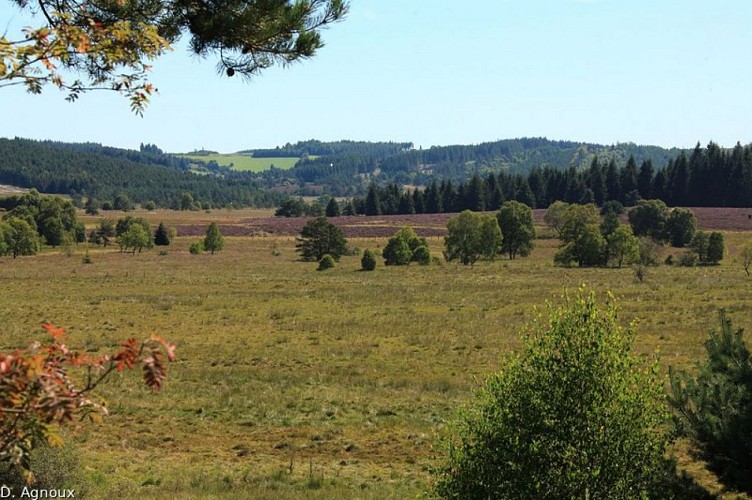
Description
Discovering two unmissable attractions of the Plateau de Millevaches: the Gallo-Roman remains of Les Cars and the Longeyroux peat bogDepart from the war memorial; head in the direction of Les Cars.At the crossroads after the bridge over the Vézère, a path rises 30 metres in front between the houses. At the height of the small barn, take the path on the right between two low walls. It extends into a track through the undergrowth that climbs and then descends to the left towards the road.Follow this road on the right; then turn left at the next crossroads to Les Rioux. In the village, the path on the right that passes above a thatched property leads to the Les Cars site (40 mn round trip).Continue on the road to Les Maisons. Go down into the village; a track passes in front of the restored mill. At the crossroads, turn left onto a track that climbs into the woods. Follow it for 600 metres and then take a path on the left that crosses a heather moor. At the end of the plot, continue straight ahead, the path runs alongside a meadow. At the bottom of the valley, this path becomes a stream: go up onto the bank; two small bridges allow you to cross it. A wide track leads you to the village of Celle.Go through it. 200 m after you leave the village, a short path on the left joins a road. Follow it on the left to reach the reception area for the Longeyroux peat bog (off the circuit: it is possible to go down the interpretation trail - 30-minute circuit).Continue on this road for 500 m; in a bend, take the track which goes straight ahead.Where the tracks cross, continue straight on the path that rises and then enters the forest. Go along the fence to go through the wetland. The path continues in the woods. When you get up to a meadow, fork left to join the Borde.Continue by the small road. Turn left at the next crossroads to reach St-Merd.
Technical informations
16 km
|
max. 905 m
min. 807 m
| |||
Altimetric profile
Starting point
Steps
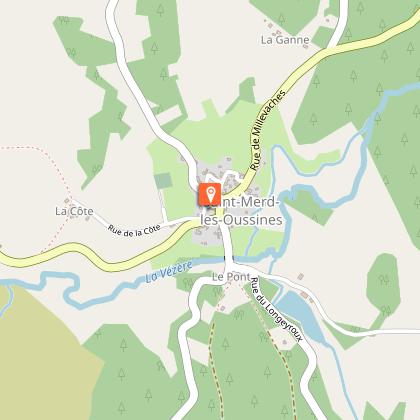
Bourg de Saint-Merd les Oussines
Curieux nom que celui de St-Merd qui est en fait une contraction de St-Médard ; une fontaine miraculeuse lui est d’ailleurs consacrée à la sortie du village en direction du cimetière.Remarquez à l’extérieur de l’église un enfeu (niche funéraire), possible sépulture d’un seigneur des Oussines, ancien domaine médiéval situé sur la commune. A l’intérieur, un gisant (tombe sculptée) pourrait abriter quant à lui la sépulture d’un dignitaire de l’Ordre de St-Jean de Jérusalem.

Vestiges gallo-romains des Cars
Les vestiges gallo-romains des Cars sont composés de deux édifices funéraires et d’une vaste habitation située 200 m. en contrebas. La présence, au cœur d’un domaine agricole, de la riche villa d’un propriétaire terrien en lien avec deux mausolées privés, datés des II et IIIème siècles après J.-C. est une hypothèse qui reste à confirmer. Célèbre pour son bac monolithe de granit, ce site est en accès libre toute l’année.
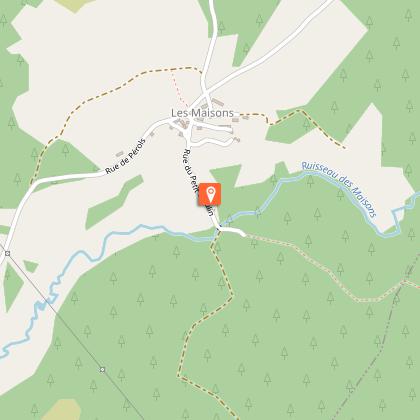
Moulin des Maisons
Il n’est pas en Haute-Corrèze un petit cours d’eau qui n’était utilisé par un ou plusieurs moulins ; chaque ferme, chaque village avait le sien. De taille modeste, ils étaient le plus souvent utilisés pour moudre du grain pour l’alimentation du bétail.Preuve de l’attachement de la population à son petit patrimoine, le moulin des Maisons a été restauré avec soin.
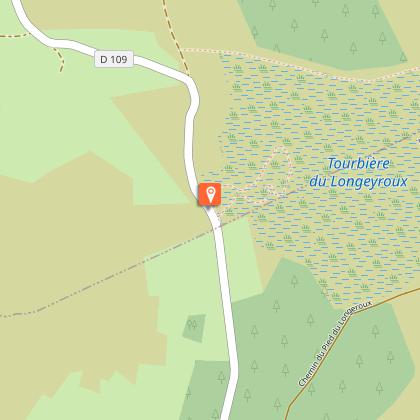
Tourbière du Longeyroux
La Tourbière du Longeyroux (255 hectares) occupe le fond d’une cuvette qui recueille les eaux de pluie des puys alentours ; ainsi naît la rivière Vézère. Un climat froid et humide, un sol granitique acide ont favorisé le développement d’une faune et d’une flore particulières. Un petit sentier d’interprétation de 30 mn permet de mieux appréhender ce milieu. Afin de préserver cet écosystème, la politique de valorisation du site encourage le pâturage par les moutons et vaches de race limousine.
Points of interest
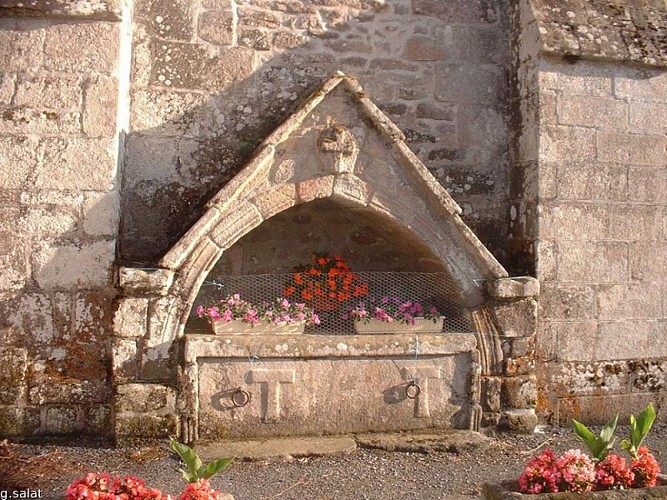
The village of Saint-Merd les Oussines
What a curious name is that of St-Merd, which is, in fact, a contraction of St-Médard; a miraculous fountain is dedicated to him at on the outskirts of the village as you go towards the cemetery. Outside the church, notice a tomb (funerary niche), possibly the burial place of a lord of Les Oussines, an old medieval estate located in the town. Inside, a carved tomb topped with a figure may house the burial of a dignitary of the Order of St. John of Jerusalem.
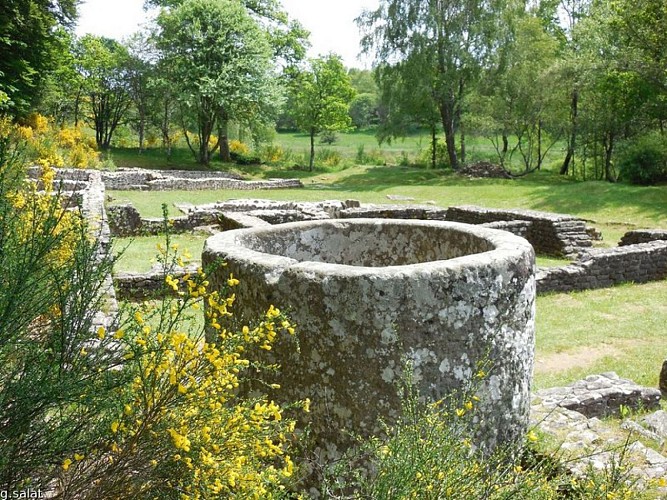
Gallo-Roman remains at Les Cars
The Gallo-Roman remains of Les Cars are composed of two funerary buildings and a huge dwelling located 200 m. below. The presence, in the heart of an agricultural estate, of an impressive villa owned by a landowner linked to two private mausoleums, dating from the 2nd and 3rd centuries AD, is a hypothesis that remains to be confirmed. This site, famous for its monolithic granite tank, is open all year round.

Moulin des Maisons
There is no small river in Haute-Corrèze that was not used by one or more mills; every farm, every village had its own. Of modest size, they were most often used to grind grain for livestock feed. Proof of the population's attachment to its local heritage, the Moulin des Maisons has been carefully restored.
Additional information
Advised parking
War Memorial, Saint-Merd les Oussines
Advice
Allow two more hours to visit the sites of Les Cars and Le Longeyroux (these two sites are open freely all year round)Attention: provide suitable shoes in case of heavy rain and, on the way back, do not hesitate to climb on the right side of the path to bypass the puddles
Access
12 km from the tourist information office in Bugeat. From Bugeat, follow the D979 towards Meymac. As you leave of the village, turn left onto the D979E1 then the D164 towards St-Merd.
Ambiance
One of the iconic trails of the Plateau de Millevaches which allows you to discover the variety of its landscapes: softwood and hardwood forests, peat bogs and wetlands, meadows and villages of granite. Explore them in all the four seasons, as the atmosphere changes throughout the year. A favourite is the month of August when the heather is in flower.
Arrival
War Memorial, Saint-Merd les Oussines
Departure
War Memorial, Saint-Merd les Oussines
